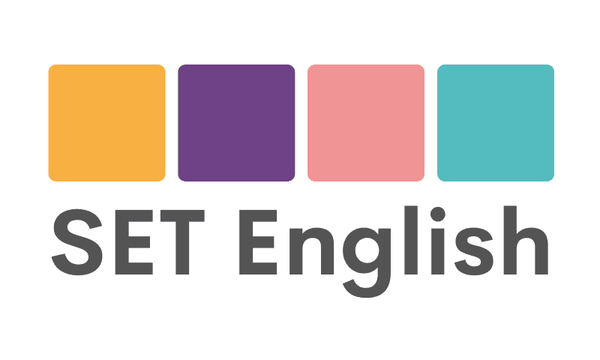
OET Speaking - How the Relationship Underpins Good Performance
OET Speaking - How the Relationship Underpins Good Performance
OET Speaking is a test of how well you can speak with patients or carers in a medical setting. It is judged in two ways:
- Linguistic Criteria
- Clinical Criteria
You can find the breakdown of these criteria here.
I’d like to examine how one of the clinical criteria - Relationship Building - provides the basis for good performance in all of the clinical criteria as this is something SET English focus on a lot.
There are some official indicators of Relationship Building :
- A1 initiating the interaction appropriately (greeting, introductions, nature of interview)
- A2 demonstrating an attentive and respectful attitude
- A3 adopting a non-judgemental approach
- A4 showing empathy for feelings/predicament/emotional state
Of course, these indicators are very good and clear. Doing these things does result in a better relationship but I feel that there is more to this idea, which can really help you to do a better job in the test.
Try and think of the conversation like this:
When you speak, you are holding the ball. When the interlocutor speaks, they are holding the ball.
How does the ball go from person to person? You give it to each other!
You must approach this test like it is a real conversation. How do you do that in real life? Not just with practised phrases. Something that is not mentioned in the OET criteria but is consistent among good performers in the exam are the following characteristics of speech:
- warmth towards the patient/carer
- a genuine sense of interest in what the patient/carer says
Here is a typical exchange between OET students, in a clinical setting. The nurse does not know the patient:
Nurse: Hi, my name is John, and I am the nurse here. Can I just confirm your name?
Patient: Sarah.
Nurse: Hi Sarah. How are you today?
Patient: I’m not well really. I feel terrible.
Nurse: I am sorry to hear that. Can you tell me more about that?
Patient: It’s these headaches.
Nurse: I am sorry to hear that. When do you get them?
That dialogue looks ok. It starts well and uses some good open questions. But the empathy is repetitive and feels unrealistic. It can be improved. We can show some other clinical communication skills at the same time too, by being a bit more interested and more conversational:
Nurse: Hi, my name is John, and I am the nurse here. Can I just confirm your name?
Patient: Sarah.
Nurse: Hi Sarah. How are you today?
Patient: I’m not well really. I feel terrible.
Nurse: I am sorry to hear that. Can you tell me more about that?
Patient: It’s these headaches.
Nurse: Hmm.…headaches?
Patient: Yeah. They’re really bad.
Nurse: Oh…That sounds painful. Can I ask you a few more questions about that? Then we can have a chat about treatment.
Patient: Yes, that’s fine.
This is a far better conversation. Why?
- the empathy is real - it’s not just a repetition of ‘I am sorry to hear that’
- there is use of repetition - an indicator of ‘Understanding & Incorporating Patient Perspective’
- there is use of organising techniques - an indicator of ‘Providing Structure’
By showing an interest in your patient, you can elicit more information from them and have conversations which are organised and purposeful - and this is something SET English try to emphasis in classes.
Another example, when ‘Giving Information’:
Nurse: What do you know about endoscopy?
Patient: Not much
Nurse: OK. It is a procedure which requires the use of a tube, which will be put down your throat. It has a camera on it and we can use it to look at what is in your stomach, in case there is a problem. Is that clear?
Patient: Yes. That is clear.
Again, this dialogue does some good things - we check initial knowledge and then check understanding after. The language is also quite clear.
But compare:
Nurse: What do you know about endoscopy?
Patient: Not much.
Nurse: OK. No need to worry. I can explain everything about it. Basically, it is a procedure which requires the use of a tube, which will be put down your throat, so we can check out your stomach. Does that make sense so far?
Patient: Yes.
Nurse: Ok. The tube has a camera on it and we can use it to look at what is in your stomach, just in case there’s anything that’s not quite right. OK?
Patient: Yes. That is clear.
Nurse: Would you like me to repeat any of that?
Patient: No, that’s fine.
Nurse: Now, I know it sounds uncomfortable but we’ll do our best to minimise that, ok?
Patient: Thank you very much.
Again, this is much better. Why?
- We use an ‘organisational technique called ‘chunking’ - where you break explanations down into small ‘chunks’ and check after each one.
- more effort to explain - repetition of ‘stomach’ - patients don’t always understand things first time and we have to take time to explain things properly.
- We have made the explanation ‘relatable’ and empathetic at the end. This is not part of the endoscopy explanation but it is part of good explanation technique.
So, don’t just think that Relationship Building is only starting the conversation well. If you keep in mind that you should have a good relationship throughout the conversation you will do much better across all criteria!
Come and practise these types of techniques and learn lots of great phrasing in the SET English speaking classes!
